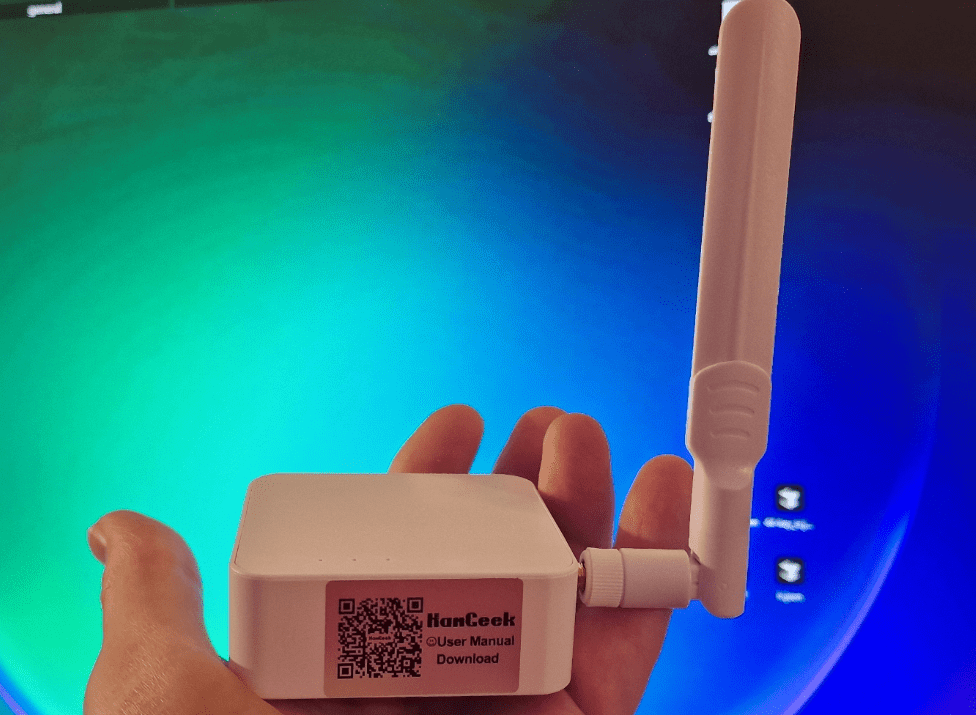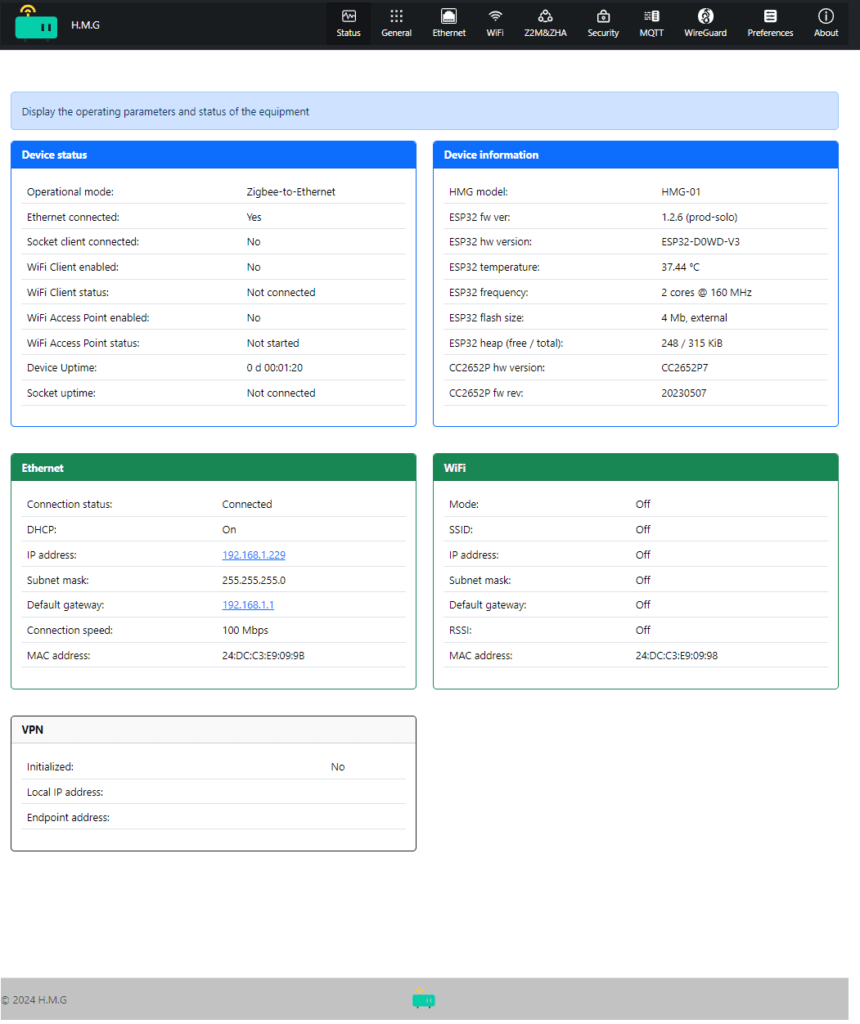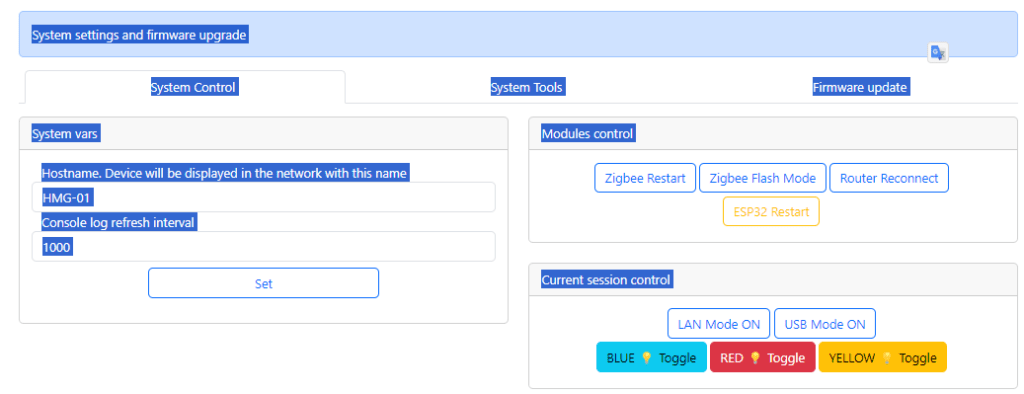If you’ve been reading the blog (I hope you have) recently you’ll know I’ve reviewed the SMLIGHT SLZB-06 and SMLIGHT SLZB-06p7 Zigbee Coordinators which can also VERY EASILY be used as Zigbee routers. You may also have noticed that I’ve converted the odd Sonoff Zigbee Coordinator to be a router.
Why? well, in any installation you should probably only have one coordinator but you can have as many routers as you like. If you’re not yet heavily into Zigbee, this radio alternative to WiFi for IOT devices uses a single “coordinator” hooked into for example Zigbee2MQTT, to provide communication for a number of Zigbee devices. Ok, I know this probably doesn’t make sense to beginners so I’ll repeat what I and others have said elsewhere: The creators of Zigbee for whatever reasons, decided to call what you and I might think of as a router, a coordinator – and mesh slave routers are called routers – figure that out.
Now to complicate matters – most Zigbee mains-powered device can also automatically act as mesh routers. You can also probably imagine that their range won’t be that great due to not having obvious, well sized antenna – bulbs being a prime example. But they work.
And so it was that given my original Sonoff USB coordinator, sitting in a corner on my home automation Raspberry Pi, that I started a learning curve. The Raspberry Pi has WiFi (which I’ve stopped using) and that and USB3 can all affect each other – so my first stop was to put the Zigbee coordinator on a long, shielded cable – that worked.
Next stop, it occurred to me that an Ethernet-based coordinator would be even better as it could be placed centrally in the building, no-where near the RPI or other sources of potential interference. That idea in principle should mean fewer routers needed – such was the start of my Zigbee optimisation experience.
Then (slight diversion) with my extended-lead USB Sonoff coordinator in Spain, I was visiting our place in the UK and decided I needed remote access to some kit there. I happened to have a Sonoff NSPanel Pro and took that with me to the UK to act as a controller and Zigbee coordinator. That worked as, at the time I only had a couple of Sonoff temperature sensors to contend with (no Raspberry Pi in the UK). When I decided to control the odd non-Sonoff Zigbee light, that idea fell apart.
THEN a pal of mine gave me one of his SMLIGHT SLZB-06 controllers, I plugged that into Ethernet in the UK as the central coordinator (but hey, no Raspberry Pi there) and hit on the bright idea of having it talk to Zigbee2MQTT back here in Spain on the RPi (second instance of Zigbee2MQTT running under Docker).
That was so successful, I went further and convinced SMLIGHT to send more adaptors and now my Spanish setup has an SLZB-06 Ethernet (I chose to use POE – the device will handle that and USB-C power) coordinator.
So what was I going to do with these spare coordinators? flash them as routers, obviously – well, do-able but not THAT easy on the Sonoffs, but it turns out that the SMLIGHT Ethernet products can be turned into routers and back at the press of a button. I was just about to permanently wire the Spanish SLZB-06 to Ethernet in the middle of our home, meanwhile I started wondering about other Ethernet-based Zigbee coordinators (when I say Ethernet I mean hardwired, not WiFi).
First stop, my Athom Ethernet Zigbee gateway – erm, no, making that into a router did not look easy but Athom then assured me that a new model was on it’s way to me that CAN easily be converted back and forth.
And that brings us FINALLY to the HamGeek Zigbee Gateway/Coordinator, photographed above, which is sitting in front of me.
I plugged the HamGeek into USB-C power at which point, blue and red lights on the top came on. While I was writing this, the red light went off. I plugged Ethernet from my router into the HamGeek and nothing changed. Out with advanced IP Scanner on my PC: A device called HMG-01 (giveaway) appeared at IP address 192.168.1.229 (port 80) on my network. Good start.
In my PC Chrome browser – I simply went to that IP address..
I like it already:
Erm, firmware update – choose file… No OTA update? It SEEMS that you can use USB mode or Ethernet mode and I assumed that router reconnect means you can put it in router rather than coordinator mode … and from the above you can clearly use it in WiFi mode if you wish. The unit is also obviously ESP32-based and can handle Zigbee2MQTT or ZHA. You can also change which port these use. That last top-panel LED will light up when Zigbee2MQTT is talking to the unit and Vice-versa.
Ethernet can be DHCP IP or you can fix the IP in the menu. Same with WiFi. You can also enable or disable MQTT with or without security. The unit also optionally turns Wireguard VPN on. Under system tools, you can check logs and see that HamGeek uses the CC2652P7 Zigbee chip.
I was going to say “and why MQTT” – but there’s a manual online… https://github.com/corogoo/zigbee-gateway.
Next -I’ve now tried out the unit as a Zigbee coordinator – turning off my SMLIGHT SLZB-06 and using the Hamgeek unit instead – that works – though I’m not 100% convinced it’s as good as the SMLIGHT unit – anyway the plan was then to use the HAMGEEK as a router (i.e. repeater) – and obviously update the blog – Iwaited for feedback from Hamgeek to confirm how you switch to router mode as you can with the SMLIGHT.
Well, they came back to me just today (Oct 24, 2024) and…. you have to flash router firmware thouth they did not send a link for that firmware – I’ll go look – BUT that for me is a dissinct backward step compared to the SMLIGHT products (simple button press).






Hi,
I have a HamGeek HMG-01 coordinator and got another to use as a router. However, I found that all HamGeek HMG-01s are manufactured with the one IEEE address which means that you can only ever have one on a network. The address is not configurable (although it appears configurable in the UI).
So saying the HMG-01 can be used as a coordinator is fine, as there can only be one on a network. However it cannot practically be used as a router unless you take care that there is only one.